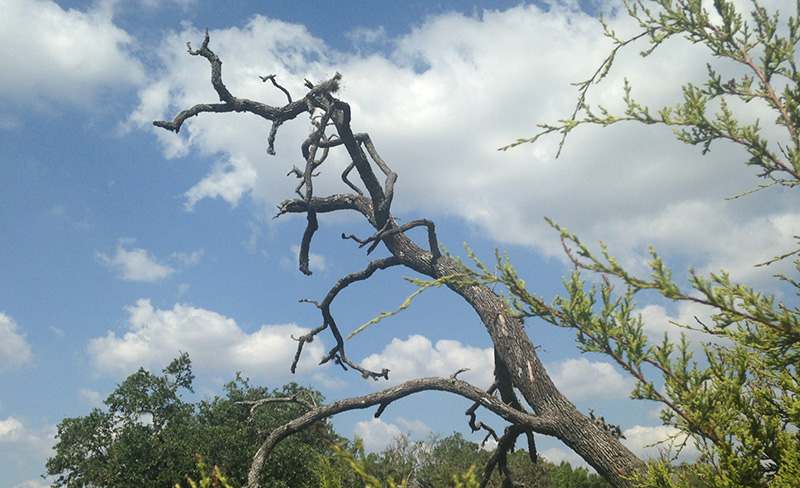If you Google the word “snag” the first definition to pop up is “an unexpected or hidden obstacle or drawback.” While many might look at a dead tree and consider it a drawback, this particular snag is actually a positive for wildlife. Certainly, few things are of more benefit to wildlife than a lush, living tree with its fruits and nuts for food, leafy shelter from predators and the elements, and shaded nesting place for the next cycle of life to begin. But a snag, a dead tree left upright to decompose, also offers its own equally impressive array of wildlife benefits.
Hollow cavities and crevices make snag perfect for nests and food storage. Over 85 species of North American birds use tree cavities as their home. Woodpeckers, in particular, take advantage of the softer, decaying wood to carve out their special place. And, once they’ve moved on to newer digs or the great nesting cavity in the sky, their holes provide homes for swallows, chickadees, nuthatches, bluebirds, owls, and other cavity-nesting birds that are rarely able to excavate their own nest sites.
In addition to birds, many others call a cozy snag cavity home including ringtails, raccoons, porcupines, lizards, and squirrels who also enjoy the nut storage amenities. Further, the delicious smorgasbord of insects, mosses, lichens, and fungi found on snag are an important food source for wildlife, while the exposed, high branches are ideal for potential predator and prey look-outs. Red-tailed and Sharp-shinned Hawks, Bald Eagles, Crested Cara Caras, Great-horned Owls, and other raptors use snag as the perfect hunting perch. The mosses, lichens, and fungi that grow on snag also help revitalize the soil through the nitrogen cycle, and as the snag loses branches that become logs, they then become home for toads, salamanders, earthworms, and more while helping foster new seedlings as they decay.
So, what’s the Catch with Snag as a Wildlife Management Activity?
If a tree dies on your property and you just leave it there to become snag for wildlife, does that qualify as a wildlife management activity? Can it really be that simple?
Well, not quite.
Natural cavity/snag development should be part of your overall plan for providing supplemental shelter as a qualifying activity. Snags should be considered in conjunction with, for example, nest boxes, brush piles, and slash retention for your overall plan. For your snag development you need to also take into consideration the species, size of snags, and how many snags per acre you should have. About 2-4 snags per acre is a general rule of thumb for wildlife benefits, but the particulars of your neck of the woods may indicate more or less. Also, to maximize the wildlife benefits, it’s good to have a variety of soft and hard wood snags, as well as a variety of sizes.
Ultimately, unless a dead tree poses a threat to a structure, don’t immediately break out the chainsaw and lay it to rest in the fireplace. Its lifecycle may not be done just yet. For wildlife, dead wood is good wood and should be an integral part of your wildlife management plan.









